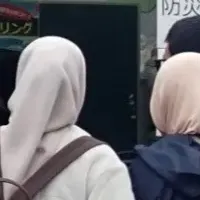
IBHS Unveils Blueprint for Resilient Rebuilding in Los Angeles Post-Wildfires
IBHS Unveils Blueprint for Resilient Rebuilding in Los Angeles Post-Wildfires
Following the catastrophic wildfires that affected Los Angeles, the Insurance Institute for Business & Home Safety (IBHS) has published a comprehensive plan titled Resilient Rebuilding: A Path Forward for Los Angeles. This document serves as a critical guide to reconstruct homes and communities in a manner that ensures they are more resilient and insurable against future wildfire threats.
The Need for Resilience
The recent Eaton and Palisades Fires have dramatically demonstrated the vulnerability of many Los Angeles homes. As the city embarks on a significant rebuilding effort, the Institute emphasizes the importance of incorporating specific mitigation strategies to enhance the survivability of structures in high-risk areas. Roy Wright, CEO of IBHS, has highlighted that this moment marks a pivotal opportunity to influence the design and safety of future constructions. He calls for action to implement evidence-based fire mitigation techniques that will substantially decrease the potential risks associated with wildfires.
Key Recommendations
The report outlines a clear sequence of actions that local authorities are urged to pursue in the rebuilding process. Some of the key recommendations include:
1. Extend Chapter 7A Requirements: The IBHS calls for the extension of Chapter 7A requirements, which relate to fire-resistant materials and construction practices, to cover the entire Eaton Fire footprint. This would ensure that homes built in this region adhere to higher safety standards from the ground up.
2. Develop a Zone 0 Standard: IBHS proposes that a Zone 0 standard, defining a five-foot perimeter around structures that must be devoid of vegetation and flammable materials, should be established for both the Eaton and Palisades Fire sites. This measure will significantly reduce the threat of flames reaching buildings immediately.
3. Enhance Mitigation Actions: The recommendations include bolstering current Chapter 7A requirements with additional strategies aligned with the IBHS's Wildfire Prepared Home Plus standard, granting properties comprehensive protections against wildfires.
4. Local Defensible Space Requirements: Establishing specific defensible space criteria is essential for at-risk neighborhoods to prevent wildfires from rapidly spreading to residential areas.
5. Maximize Setbacks: The report suggests increasing the distance between buildings to allow for better airflow and reduce fire spread potential.
6. Maintain Fuel Breaks: Leveraging local planning resources, the IBHS emphasizes the necessity of creating and maintaining fuel breaks around high-hazard areas to protect homes and infrastructure from encroaching fires.
7. Retrofit Surviving Homes: A robust plan for retrofitting homes that escaped destruction is also necessary, to ensure they are adequately equipped with baseline protections against future wildfires.
The Role of Local Leaders
The IBHS report is not just a guideline; it is a call to action directed at city and county leaders in Los Angeles. By implementing these recommendations, officials have the opportunity to significantly alter the safety landscape of the region, setting a precedence for wildfire resilience in urban planning going forward.
A Path to Recovery
As Los Angeles gears up to rebuild after this series of devastating fires, the measures proposed by IBHS present a pathway to a future where homes and communities stand a better chance of not only surviving disasters but thriving in their aftermath. Emphasizing science-backed approaches will undoubtedly offer peace of mind to residents eager to recover and rebuild their lives.
In summary, Resilient Rebuilding: A Path Forward for Los Angeles evidences a crucial step towards ensuring that future wildfires do not undermine the security and welfare of Los Angeles residents. As the city navigates these changes, the insights from IBHS are essential in guiding effective and sustainable rebuilding efforts.
For more insights and findings from this report or additional IBHS wildfire research, please visit IBHS's official website.
Topics Policy & Public Interest)










【About Using Articles】
You can freely use the title and article content by linking to the page where the article is posted.
※ Images cannot be used.
【About Links】
Links are free to use.